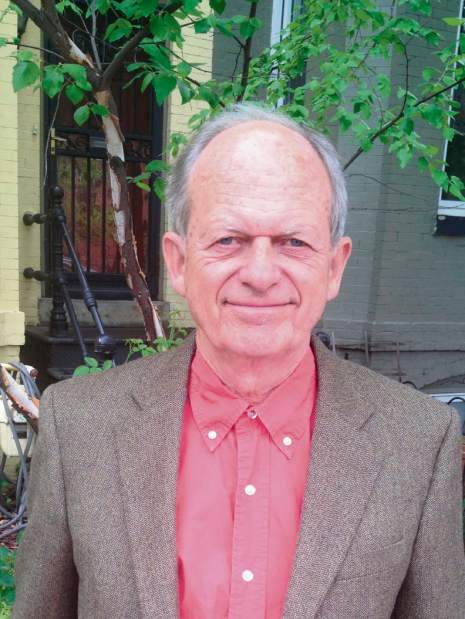https://archive.triblive.com/aande/books/the-long-winding-path-to-the-memorialization-in-shanksville/
The long, winding path to the memorialization in Shanksville

Submitted
J. William Thompson, author of “From Memory to Memorial”
Almost 16 years ago, the final plane among the four hijacked by terrorists on Sept. 11, 2001, crashed into an empty field in rural Somerset County.
Ten years later, Flight 93 National Memorial was dedicated near Stoystown, a tribute to the 40 passengers and crew believed to have fought back against the terrorists as the plane roared low over Stonycreek Township.
Quickly eulogized as heroes, they were credited with uniting in the sky and preventing the plane from striking a likely target in Washington, D.C.
In his new book, “From Memory to Memorial: Shanksville, America and Flight 93,” J. William Thompson presents a look at memorialization in America, and closely examines what eventually rose from the ashes of United Airlines Flight 93.
“If the crash site was hallowed ground, what kind of marker would proclaim this?” he asks.
The former editor of Landscape Architecture magazine, Thompson, 74, earlier wrote “The Rebirth of New York City's Bryant Park” and “Sustainable Landscape Construction.”
He first visited the temporary memorial in 2006, feeling a personal connection. Had the plane continued on to its expected target of the U.S. Capitol, it could have crashed within blocks of his then-office in Washington, D.C.
“That day, I'd been far too close for comfort to Flight 93's destination. ... Apparently, the bravery of the passengers and crew had kept me out of danger and saved me from witnessing the fire and mayhem that were visited on the Pentagon and the Twin Towers,” he writes.
A conversation in 2011 with Jeff Reinbold, then-superintendent of the Flight 93 site, led him to focus on that particular memorial.
“I was thinking about writing a more general book about memorials, how they evolve, what sparks a memorial. ... It seemed like serendipity,” he says.
Encountering a chain link fence overlooking a desolate field, the links embedded with flags, flowers, photos and notes left by visitors, took Thompson by surprise.
“It was not a thing of great beauty. ... And yet it was very touching and completely democratic,” Thompson says.
The evolution of a horrifically silent crater to the dedication of the Flight 93 National Memorial involved 10 years of stalled fundraising, property acquisition, squabbles among victims' family members and conflicting opinions in design selection.
Thompson's book, published earlier this year by the Pennsylvania State University Press, dives deeply into all of those issues.
His professional background as a landscape architect and his writing and editing career all served him well in the effort. His exhaustive research included meeting with residents, officials and planners and reading the oral histories of witnesses, first responders and family members.
Thompson goes behind the scenes of the work undertaken by the National Park Service, family members and residents to make the memorial happen.
He examines its effect on Shanksville, a small town he describes as “having a Rip Van Winkle quality,” suddenly shattered by tragedy and under a media spotlight.
“Spontaneous memorials ... had become an almost automatic response to mass disasters” by the beginning of the 21st century, Thompson writes.
He speaks with residents who volunteered as temporary memorial ambassadors, sharing stories and boxes of tissue with visitors. Thompson observes the care given to collecting memorabilia left at the temporary site, much of it now part of a rotating exhibit at the new visitors center, which opened in 2015.
And he relays the toll taken on those most intricately involved, from those conducting oral histories to Somerset County Coroner Wallace Miller, who cried with and befriended the victims' families.
Thompson also met with the late Father Al Mascherino, a former Catholic priest and founder of the Flight 93 Memorial Chapel.
“Father Al was key to the book for me. A lot of the book is personal stories. His personal story was that his life was turned around by 9/11 and the crash. ... Suddenly, he was a man with a mission,” he says.
The completed memorial was selected by a competition and designed by a professional architect.
“It is austere, very funereal. There are no bells or whistles, nothing garish about it,” Thompson says.
The chapel is more “amateur in decoration,” and “kind of cluttered,” he says. “That's fine. That was (Mascherino's) vision.”
But he wonders about its future.
“Hundreds of years into the future, the memorial will be there. Father Al's church?” he says.
Memorials can represent grief early on and memory in the long term, Thompson says. “Forgetting is always the great danger,” he says.
Stone and mortar, he says, is just one manifestation of memorialization.
Following the 2006 shooting of 10 girls in an Amish schoolhouse (five died) in Lancaster County by Charles Roberts, who also killed himself, no memorial was erected. Instead, the schoolhouse was razed.
“Historically, obliteration is a common fate of memorials where no heroics occurred,” Thompson notes.
At Virginia Tech, where student Seung-Hui Cho killed 32 people in 2007, engraved blocks of limestone stand in place of a conventional memorial.
Thompson gives examples of more personalized memorials, including some made in honor of Flight 93 — tattoos, songs, flag ceremonies, even a ballet.
“I wonder if some of these personalized memorials, like Father Al's church, are not as meaningful as $60 million national monuments,” he says. “They are very humble expressions ... Yet they have tremendous emotional power.”
In the case of the Flight 93 National Memorial, Thompson believes the planners got it right.
“This was a stark, unforgiving design, but absolutely appropriate to the gravity of the place and to those whose remains are interred there,” he writes.
Mary Pickels is a Tribune-Review staff writer. Reach her at 724-836-5401 or mpickels@tribweb.com or via Twitter @MaryPickels.
Copyright ©2025— Trib Total Media, LLC (TribLIVE.com)
